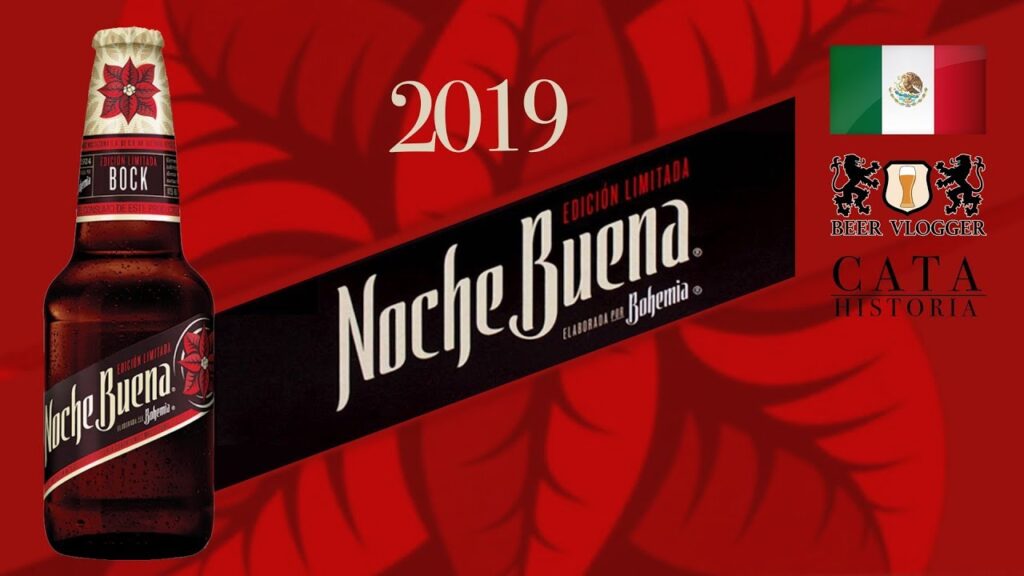Introducing Chef Edgar Núñez’s Vegetal Mexican Cuisine
Welcome to a revolution in the culinary arts that pays homage to the rich tapestry of Mexican flavors. Chef Edgar Núñez stands at the forefront of modern Mexican cuisine with his innovative approach to vegetarian dishes. Trained in some of the world’s most esteemed kitchens, Chef Núñez has embarked on a journey to transform the landscape of Mexican gastronomy by highlighting the versatility and vibrancy of vegetable-based dishes.
At the heart of Chef Núñez’s philosophy is the commitment to sustainability and the celebration of local produce. His creations are a bold statement of color, texture, and taste, masterfully elevating humble vegetables to a level of sophistication that challenges the conventional expectations of Mexican fare. Through his unique vision, he has redefined what it means to experience Mexican food, striking a delightful balance between tradition and innovation.
The selection of dishes curated by Chef Núñez is not only a feast for the senses but also a testament to the rich agricultural heritage of Mexico. Each plate is crafted with the freshest ingredients, sourced from local farms and markets, ensuring that every bite encapsulates the essence of Mexico’s diverse regions. By reimagining time-honored recipes with a vegetal twist, Chef Núñez invites diners to embark on an unforgettable culinary adventure that is both delicious and conscious.
The Origins of Vegetal Mexican Cuisine
The roots of Mexican vegetable cuisine are deeply woven into the pre-Hispanic history of the country, tracing back to the diets of the ancient civilizations that once flourished across these lands. The Aztecs, Mayans, and other indigenous peoples had not only a profound respect for nature but also an innate understanding of the nutritional value of the native flora. This ancestral wisdom has been passed down through generations, bringing a wealth of vegetable-based dishes to the modern culinary scene.
Central to traditional Mexican vegetable cuisine are staples like corn, beans, and chilies, which have been cultivated and revered since ancient times. Corn, or maíz, in particular, is not just a food item but a cultural symbol. It serves as the foundation for tortillas, tamales, and a myriad of other dishes. Beans provide essential proteins while chilies add depth and complexity with their varied flavors and heat levels. Together, these ingredients form the backbone of what we now recognize as authentic Mexican fare.
Furthermore, the pre-Hispanic cultures were adept at foraging for wild edible plants and herbs, an art that is still practiced in some regions of Mexico today. These ingredients often possess unique flavors and nutritional properties that the modern food industry is only beginning to appreciate. For instance, the use of nopales (cactus pads), quelites (wild greens), and huauzontles (a native herb similar to quinoa) is still prevalent, and these elements add an earthy, nutritious facet to the vegetal Mexican cuisine.
In addition to indigenous ingredients, Mexico’s vegetal cuisine has also been influenced by the Spanish conquest, which introduced new fruits and vegetables such through trade. This blending of the old world and the new created an incredible fusion that has evolved into the diverse array of plant-based dishes enjoyed today. Tomatoes, avocados, and squash, although native to Mexico, were explored in new ways, alongside introduced foods like rice, citrus fruits, and an assortment of spices.
The methods used to prepare Mexican vegetable dishes also speak to the history of the country. Age-old techniques such as nixtamalization—the process of treating corn with lime to make it more nutritious and digestible—remain in practice. This technique is a testament to the sophistication of pre-Hispanic cooks, whose influence continues to be felt in the kitchens of modern Mexico. Whether steaming, grilling, or roasting over open fires, the preparation methods contribute as much to the depth of flavor as the ingredients themselves.
The Rich Ingredients of Mexico’s Plant-Based Dishes
Mexico’s cuisine is celebrated worldwide for its vibrant flavors, colorful presentation, and rich history. Among the gems of Mexican gastronomy are its plant-based dishes, which boast an impressive array of fresh, nutritious, and versatile ingredients. In this blog post, we’ll delve into the foundational ingredients that make these plant-based dishes a feast for the senses and a staple of Mexican culture.
Native Corn: The Heart of Mexico’s Kitchens
Corn, or maíz, is not merely a crop in Mexico; it is a cornerstone of its culture and a primary element in plant-based cooking. From the iconic tortillas that accompany nearly every meal to the hearty tamales filled with spiced vegetables, corn showcases its versatility. The ancient process of nixtamalization, in which corn is soaked and cooked in an alkaline solution, unlocks its nutritional value and gives us the soft, malleable dough known as masa, essential for making homemade tortillas and other corn-based delicacies.
Beans and Legumes: A Protein-Packed Powerhouse
Beans are another staple of the Mexican pantry, revered for their protein content and earthy flavors that pair perfectly with the vibrant spices of the region. Black beans, pinto beans, and red kidney beans commonly feature in dishes like enchiladas, burritos, and as a hearty side dish. Beyond their tastiness, beans are a powerful source of nutrition, offering fiber, iron, and complex carbohydrates, making them an excellent foundation for plant-based diets.
Chilies: The Spice of Life
No exploration of Mexican plant-based ingredients would be complete without acknowledging the myriad of chilies that add both heat and depth to dishes. From the mild poblano to the fiery habanero, chilies are used fresh, dried, or smoked, lending a unique complexity to salsas, stews, and sauces. Chilies aren’t just about spice; they also contain antioxidants and vitamins such as Vitamin C, and their capsaicin content has been linked to numerous health benefits, including pain relief and reducing inflammation.
Heirloom Vegetables and Fruits: A Bounty of Flavors
The rich soils of Mexico yield an array of heirloom vegetables and fruits that form the backbone of its plant-based offerings. Tomatillos, with their tart flavor, are a staple in green salsas, while nopales (cactus pads) add a unique texture and taste to salads and tacos. Avocados, rich in healthy fats, are the star ingredient in the globally beloved guacamole. Mexico also celebrates a variety of tropical fruits like papaya, mango, and guava, which are often enjoyed fresh or used to create mouth-watering desserts and refreshing drinks. These fruits and vegetables not only contribute to the deliciousness of Mexican plant-based cuisine but also to its nutritional profile, providing a wide spectrum of essential vitamins, minerals, and antioxidants.
Chef Edgar Núñez’s Signature Vegetarian Mexican Recipes
When it comes to authentic Mexican cuisine, the name Chef Edgar Núñez surfaces with respect as a culinary innovator. This renowned chef has captured the essence of traditional Mexican flavors, recreating them in his own unique vegetarian flare. For the adventurous foodie, sampling Chef Núñez’s dishes is equivalent to embarking on an epicurean journey through Mexico’s rich gastronomic landscape – sans meat.
Núñez’s cooking philosophy revolves around sustainability and health, gifts that are plentiful in Mexico’s varied agriculture. He cleverly utilizes local produce to craft dishes that both vegetarians and non-vegetarians rave about. From the heart of Mexico City, his kitchen becomes a laboratory where the humblest vegetables are transformed into gourmet masterpieces.
One such dish is his Heirloom Bean Tamal. Wrapped in a fragrant corn husk, this tamal is a celebration of indigenous ingredients, with each bite offering a medley of textures and earthy flavors, elevated by the chef’s sophisticated touch. The dish showcases Núñez’s commitment to honoring Mexican food heritage while also redefining it.
Another creation, the Roasted Poblano Chile with Quinoa “Picadillo”, exemplifies the daring spirit of Chef Núñez’s kitchen. Here, the smoky flavor of roasted poblanos is perfectly balanced with the nutty essence of quinoa, creating a dish that’s as nutritious as it is indulgent. It’s Mexican comfort food reimagined, retaining all the gusto but catering to a health-conscious audience.
For those who have a penchant for vibrant flavors, the Cactus-Pineapple Salad is a must-try. It’s a dish where the crunchy texture of fresh cactus paddles meets the sweet tang of pineapple, dressed in a zesty lime vinaigrette. This salad is not just a refreshing palate cleanser, but also a testament to Chef Núñez’s ability to transform simple produce into a culinary spectacle.
Health and Nutrition in Vegetal Mexican Eating
Mexican cuisine is not only famous for its bold flavors and varied textures but also for its capacity to be both delicious and nutritious, particularly when it comes to its plant-based offerings. Traditional Mexican dishes often incorporate a bounty of native vegetables, legumes, and grains, which come together to offer a rich array of vitamins, minerals, and fiber. Ingredients like fresh tomatoes, tomatillos, various types of chili peppers, nopales (cactus paddles), beans, corn, and avocados are staples in this colorful and healthy cuisine.
A significant health benefit of traditional Mexican vegetal eating is the role of dietary fiber. Dishes rich in beans and whole grains, for instance, contribute to digestive health, while the variety of fruits and vegetables provide essential nutrients for maintaining a strong immune system. Meals like a zesty bean salad with lime dressing, grilled nopales, or a hearty vegetable pozole provide not just sustenance but are also important components of a balanced diet. When prepared thoughtfully, vegetal Mexican food can contribute to weight management and may help prevent chronic diseases such as diabetes and heart disease.
Moreover, the traditional Mesoamerican crop combination known as the “Three Sisters” – consisting of beans, corn, and squash – is a powerhouse of synergistic nutrition. This trio complements each other by providing a complete protein profile when eaten together, which is particularly beneficial for vegetarians and vegans. Additionally, the rich colors of vegetables like bell peppers, purple cabbage, and bright orange squash are indicative of their high antioxidant content, which can counteract the impact of oxidative stress and reduce inflammation in the body.
Where to Savor Authentic Vegetal Mexican Cuisine
Exploring Mexico’s vast culinary landscape extends beyond the ubiquitous tacos and quesadillas – the country’s vegetal cuisine is an artform all on its own. Food enthusiasts who cherish vegetables will delight in the traditional dishes that have been perfected over centuries, featuring the freshest local produce. From the heart of bustling Mexico City to the tranquil villages in Oaxaca, vegetal cuisine is celebrated with the same fervor as any carnivorous counterpart.
One cannot talk about authentic vegetal Mexican cuisine without mentioning the cornerstone of Mexican gastronomy: the corn tortilla. Used in an array of dishes, this simple yet versatile staple is the perfect canvas for a variety of plant-based fillings. Travelers can savor the delectable taste of tacos de nopales (cactus paddles tacos) or the ever-popular tamales, which can be stuffed with anything from poblano peppers to savory stews of beans and squash blossoms.
Local Markets: A Feast for the Senses
The local markets (mercados) are a vegetal cuisine enthusiast’s dream. Stalls are filled with mountains of chayotes, tomatillos, and xitomatl (heirloom tomatoes), along with exotic fruits like mamey, zapote, and tamarind. Take the opportunity to visit these vibrant markets where cooking demos are often held. You can savor samples of authentic dishes and learn the secrets to preparing them.
Vegetarian-Friendly Restaurants and Eateries
Amidst Mexico’s culinary revolution, a new wave of vegetarian and vegan restaurants has emerged, particularly in cosmopolitan areas such as Mexico City, Guadalajara, and Monterrey. These establishments often offer inventive plant-based takes on classic Mexican dishes. Indulge in a chile en nogada with a walnut-based cream sauce or a hearty mole poblano made with a blend of spices, chocolate, and nuts, proving that vegetal cuisine in Mexico is both rich and multifaceted.



